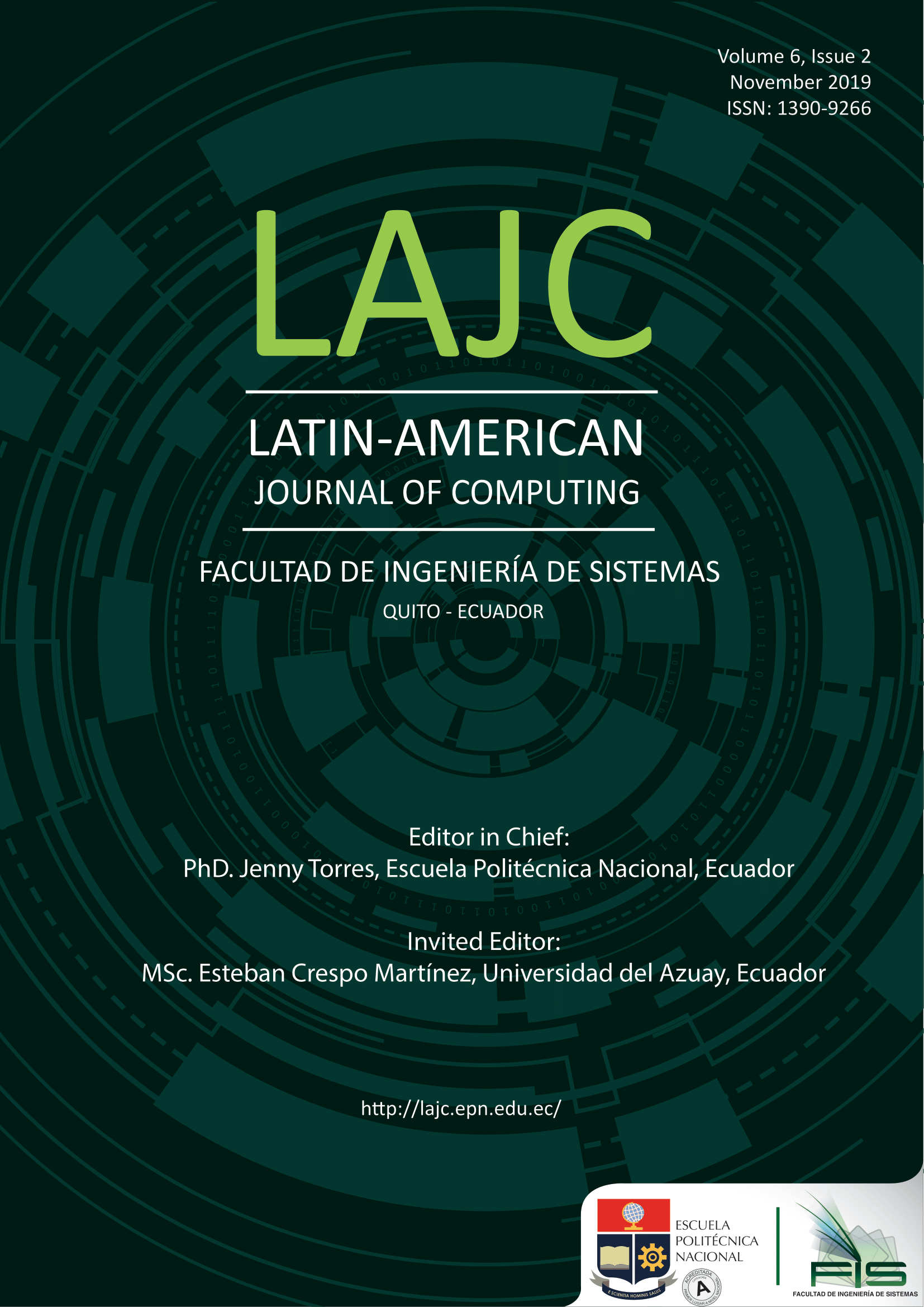An Approach for identifying Crops Types using UAV Images in the Ecuadorian Sierra
Keywords:
UAV multispectral images, analysis images, phenological analysis, crop typeAbstract
Spectral signature analysis allows identification of the different types of terrestrial objects and characterizes behaviour of different kinds of vegetation. In Ecuador usually phenological analysis (state of vegetal growing) and crop type are based on acquired manually information. This does not allow taking agile decisions over crops management. The advantages for using UAV images propose a significant change to the current methodologies. This paper presented a correlation study of crop spectral signature using multispectral images from a UAV. Ecuadorian Sierra was the study zone to differentiate the types of crops in an agricultural field. The Inception algorithm of Tensorflow was chosen to generate a crop layer and to predict the crop type with the closest possible approximation from an image.
Downloads
References
Agritotal Hompage, http://www.agritotal.com/nota/america-latina-tiene-condiciones-para-garantizar-la-seguridad-alimentaria/, last accessed (February, 2016)
HEMAV Homepage, https://hemav.com/agricultura-de-precision-telede-teccion-satelital-vs-teledeteccion-con-drones/ (April, 2018)
iRiegoHomepage, https://miriego-blog.com/2013/10/09/la-informatica-en-el-campo/, last accessed (April, 2018)
Parry, M. L., (2007) Climate change-impacts, adaptation and vulnerabil-ity: Working group II contribution to the fourth assessment report of the IPCC(Vol. 4).
Downloads
Published
Issue
Section
License
Copyright Notice
Authors who publish this journal agree to the following terms:
- Authors retain copyright and grant the journal right of first publication with the work simultaneously licensed under a Creative Commons Attribution-Non-Commercial-Share-Alike 4.0 International 4.0 that allows others to share the work with an acknowledgement of the work's authorship and initial publication in this journal.
- Authors are able to enter into separate, additional contractual arrangements for the non-exclusive distribution of the journal's published version of the work (e.g., post it to an institutional repository or publish it in a book), with an acknowledgement of its initial publication in this journal.
- Authors are permitted and encouraged to post their work online (e.g., in institutional repositories or on their website) prior to and during the submission process, as it can lead to productive exchanges, as well as earlier and greater citation of published work.
Disclaimer
LAJC in no event shall be liable for any direct, indirect, incidental, punitive, or consequential copyright infringement claims related to articles that have been submitted for evaluation, or published in any issue of this journal. Find out more in our Disclaimer Notice.










